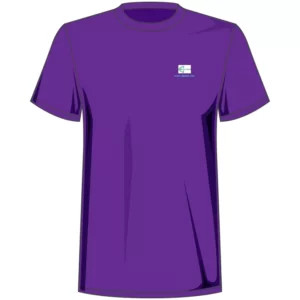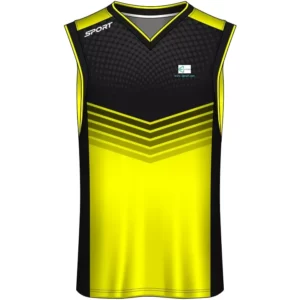Sports and fitness are an essential aspect of modern lifestyle. With an increased focus on health and wellness, people are becoming more active, participating in various sports and fitness activities. Sports apparel and footwear play an important role in enhancing performance and providing comfort during physical activities. These garments are designed to meet the specific needs of athletes and fitness enthusiasts, providing moisture-wicking, breathability, flexibility, and durability.
One of the most common materials used in sports apparel is polyester nylon blend fiber and 100% polyester fiber. These materials are preferred due to their unique properties that make them suitable for sports and fitness garments. In this article, we will explore the reasons why sports apparel is made using polyester nylon blend fiber or 100% polyester fiber. We will also examine the benefits of these materials, their drawbacks, and the latest trends in sports apparel.
Properties of Polyester Nylon Blend Fiber and 100% Polyester Fiber
Polyester Nylon Blend Fiber
Polyester nylon blend fiber is a synthetic fiber that combines the properties of polyester and nylon. Polyester is a strong, durable, and lightweight material that is resistant to shrinkage, wrinkles, and fading. Nylon, on the other hand, is a strong and elastic material that is resistant to abrasion and tearing.
The combination of these two materials results in a fiber that is lightweight, breathable, and quick-drying. Polyester nylon blend fiber is also resistant to shrinkage, wrinkles, and fading. It is an excellent material for sports apparel as it provides comfort and durability during physical activities.
100% Polyester Fiber
Polyester is a synthetic fiber that is made from petroleum-based products. It is a strong, durable, and lightweight material that is resistant to shrinkage, wrinkles, and fading. Polyester fibers are also resistant to abrasion, tearing, and pilling.
100% polyester fiber is commonly used in sports apparel due to its moisture-wicking properties. Polyester fibers are hydrophobic, which means they repel water and sweat. This property makes them ideal for sports apparel as it helps keep the wearer dry and comfortable during physical activities.
Benefits of Polyester Nylon Blend Fiber and 100% Polyester Fiber
Moisture-Wicking
One of the most significant benefits of polyester nylon blend fiber and 100% polyester fiber is their moisture-wicking properties. These materials are hydrophobic, which means they repel water and sweat. This property helps keep the wearer dry and comfortable during physical activities.
Breathability
Polyester nylon blend fiber and 100% polyester fiber are also breathable materials. They allow air to flow through the fabric, providing ventilation and helping to regulate body temperature during physical activities. This property makes these materials ideal for sports apparel as it helps prevent overheating and sweating.
Durability
Polyester nylon blend fiber and 100% polyester fiber are strong and durable materials. They are resistant to abrasion, tearing, and pilling, making them ideal for sports apparel that is subjected to high levels of wear and tear.
Flexibility
Polyester nylon blend fiber and 100% polyester fiber are flexible materials that allow for freedom of movement. They are also lightweight, which makes them ideal for sports apparel that requires flexibility and agility.
Drawbacks of Polyester Nylon Blend Fiber and 100% Polyester Fiber
Despite the many benefits of polyester nylon blend fiber and 100% polyester fiber, there are some drawbacks to these materials.
Environmental Concerns
Polyester is a synthetic material that is made from petroleum-based products. The production of these materials can have a negative impact on the environment, including greenhouse gas emissions and pollution.
Non-Biodegradable
Polyester nylon blend fiber and 100% polyester fiber are non-biodegradable materials. This means that they do not break down naturally and can take hundreds of years to decompose.
This property can have a negative impact on





